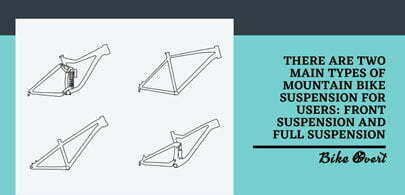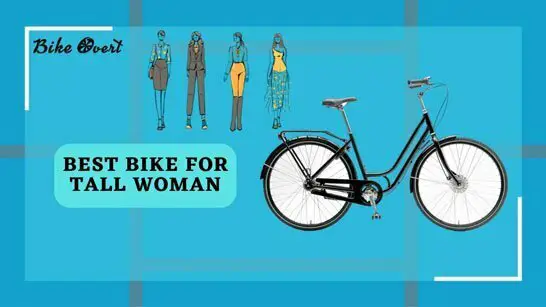Does suspension slow you down bike? How much does suspension impact the speed of a bike? Can you ride faster without suspension? This article will explore these questions and more. Suspension can have a significant impact on how fast you can ride a bike, and it’s important to understand how it works before making a decision about whether or not to use it. If you’re looking to go faster, you may want to consider riding without suspension.
A study published in the journal “Bicycling” found that cyclists who had their suspension compressed by 50 percent or more during an endurance race pedaled at about 10 percent less speed than those who had their suspension un-compressed. The slower speeds caused by suspension compression could result in a significant time disadvantage.
What is bike suspension?

In its simplest form, bike suspension is a mechanism that allows the frame and wheels of the bicycle to move up and down independently of each other. This movement absorbs shocks from the surface beneath the bike, preventing them from being transmitted to the rider. Bike suspension is especially important on mountain bikes, which are subjected to much more severe shocks than other types of bicycles.
How does bike suspension work?

There are two main types of suspension on mountain bikes in this case: active and passive. Active suspension systems use a motor to move the shock absorber, while passive systems rely on gravity and the position of the rider to do the work.
When you hit a bump, your bike’s suspension system absorbs the impact, which keeps you from feeling it in your body. This is why mountain bikes have shocks in the front and back- they help reduce the impact of bumps and keep you stable as you ride.
How does bike suspension work? It’s all about reducing the impact of bumps. By absorbing the force of a bump, your bike’s suspension system helps keep you stable and comfortable as you ride. There are two main types of suspension systems- active and passive- and each one has its own benefits.
What are the types of bike suspensions for users?

There are two main types of mountain bike suspension: front suspension and full suspension. Front suspension is a system in which only the front wheel is suspended, while the rear wheel remains in contact with the ground. Full suspension systemssuspend both wheels, providing greater comfort and better handling on rough terrain.
Most mountain bikes have some form of suspension, but not all suspensions are created equal. Some suspensions are more effective than others at absorbing shocks and keeping the rider comfortable.
What are the benefits of suspension?
Bicycle suspension is a system that isolates the rider from the roughness of the road or trail. It provides a measure of comfort and control by absorbing impacts and vibrations. There are different types of suspension systems, but all offer some advantages over a rigid frame bicycle.
The main benefit of bike suspension is increased comfort. The shocks and vibrations from riding over bumps are absorbed by the suspension, which prevents them from reaching the rider. This makes for a smoother ride, even on rough terrain. Additionally, it can help to reduce fatigue, since you’re not constantly being jarred around.
A good suspension system also gives you more control over your bike. It helps to keep it stable when traversing rough terrain, preventing it from bouncing around or skidding out. This is especially important when riding at high speeds or in tricky conditions.
Does suspension slow you down bike?
There are a lot of myths and misconceptions when it comes to mountain biking. One of these is whether bike suspension slows down your bike.
Some people believe that if you have a full suspension bike, the suspension is going to absorb all of your pedal power, which will slow you down on the trail. However, this is not actually the case all the time.
Bike suspension actually helps to smooth out the ride and makes it easier for you to pedal up hills. This is because it absorbs some of the impact from bumps and rocks, so your body doesn’t have to work as hard to overcome them. This means that you can save your energy for riding and navigating the trail.
How much does suspension slow you down?
Bicycles are designed with suspensions to provide a smooth ride by absorbing the shocks from the road. However, this also comes at a price; it slows down the bike. How much suspension slows down your bike depends on the design of the suspension and how well it is tuned. Generally, the more suspension travel you have, the slower your bike will be.
It depends on the type of suspension, the terrain, and how much air pressure is in the shock or fork. If you have a lot of air pressure in your suspension, it will be less responsive and slower to react to changes in the terrain. If you have less air pressure, your suspension will be more responsive and faster to react to changes in the terrain.
The amount of travel (how far the suspension moves) also affects how quickly your bike responds to changes in the terrain. Short travel suspensions are quicker to react to than long travel suspensions.
How does the bike suspension affect the bike speed?
The suspension on a bike is important for speed and control. The suspension keeps the tires in contact with the ground, which allows for more efficient travel. When the bike hits a bump, the suspension absorbs the impact, which prevents the bike from bouncing around and slowing down. Additionally, a good suspension system will keep the bike stable when traveling at high speeds, allowing for greater control.
What causes a bike to slow down?

There are many things that can cause a bike to slow down. One of the most common reasons is when the bike’s chain becomes dirty and starts to slip off the gears. This can be prevented by regularly cleaning and lubricating the chain.
Another reason a bike might slow down is when the tires go flat. In this case, it’s important to replace the tire as soon as possible.
A third reason a bike might slow down is because of a mechanical issue with the brakes or gears. If this is the case, it’s best to take the bike to a professional mechanic for repair.
Are there any good cheap full suspension bikes?
There are plenty of good full suspension mountain bikes available on the market, but they can be expensive. Are there any good cheap full suspension bikes? Yes, there are some great affordable options if you know where to look.
One option is to consider a used bike. There are plenty of used full suspension bikes available online and in local classifieds. Another option is to buy a bike that is specifically designed for budget-minded riders. These bikes may not have all the bells and whistles of more expensive models, but they will still offer a great riding experience.
Finally, it is also worth considering a less well-known brand. These brands often offer great quality at a fraction of the price of more popular brands. So, if you are looking for a good cheap full suspension mountain bike, there are plenty of options available to you.
Do you really need a full suspension mountain bike?+
There are a lot of factors to consider when deciding if you need a full suspension mountain bike. The first thing you need to ask yourself is what type of riding do you plan on doing? If you’re mostly going to be riding on groomed trails or single track, then a hardtail mountain bike may be a better option for you. A full suspension mountain bike is more suitable for off-road riding and downhill racing.
Another thing to consider is your budget. A full suspension mountain bike can be more expensive than a hardtail mountain bike. However, if you’re looking for the best possible performance, then a full suspension bike is the way to go.
Finally, don’t forget to factor in your own body weight and physical abilities.
Is front suspension necessary on a hybrid bike?
Are you considering purchasing a hybrid bike, but are not sure if front suspension is necessary? Here is some information to help you decide if front suspension is a must-have for you.
First of all, hybrid bikes are designed to be versatile, and can be used for a variety of different activities, such as commuting, fitness riding, or even light trail riding. And depending on the type of terrain you plan to ride on, front suspension may or may not be necessary.
If you’ll mostly be riding on paved roads and bike paths, then a hybrid bike without front suspension will probably work just fine. However, if you plan to do any light trail riding (on dirt or gravel roads), then front suspension will definitely come in handy. It helps absorb the bumps and rocks along the way, making your ride much more comfortable.
How to convert a hardtail to full suspension bike?
There are a few different ways that you can convert a hardtail mountain bike into a full suspension bike. One way is to add a suspension fork to the front of your bike. This will give you some of the benefits of a full suspension bike, but it will not be as effective as adding a full suspension frame to your bike.
Another way to convert your hardtail mountain bike into a full suspension bike is to add a rear shock absorber to your frame. This will provide more cushioning and support for your ride, making it more comfortable and easier on your body.
If you are looking for the most effective way to convert your hardtail mountain bike into a full suspension bike, you should consider adding a full suspension frame to your ride. This will provide the most comfort and support, and it will make riding your mountain bike much more enjoyable.
If you are serious about converting your hardtail to full suspension then read this article that is completely dedicated to this matter.
Why do road bikes don’t have suspension?
Road bikes typically don’t have suspension because it would add weight and cost to the bike. A suspension system on a road bike would also make it more difficult to pedal and navigate around tight corners. Road bikes are designed for speed and efficiency, so adding a suspension system would be counterproductive. Moreover, suspensions are not for road bikes.
Conclusion
Suspension does have an impact on bike speed, but the amount varies by type of suspension and other factors. For the average cyclist, suspension is unlikely to slow them down by more than a very few percent. If you’re looking to go as fast as possible, you may want to consider a bike without suspension. However, for the average rider, it’s a negligible difference. If you’re looking for a comfortable ride, suspension is definitely the way to go.




